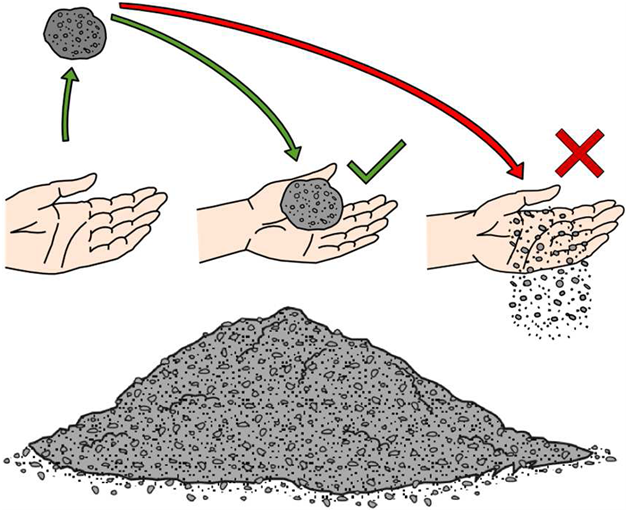The quantity of water divided by the quantity of cement (both measured in kilograms) gives the water – cement ratio.
- A low water to cement ratio leads to high strength but low work ability.
- A high water to cement ratio produces a low strength concrete but good work ability.
A common shortcoming in concrete works is that too much water is added as it is then easier to spread and compact the concrete.
Caution: Too much water seriously affects the strength of the concrete.
The strength of concrete increases when less water is used during the preparation of the mix. Although the hydration process consumes a certain amount of water, wet concrete actually contains more water than required for the hydration reactions. The excess water is added to provide the wet mix with sufficient work ability. Concrete needs to be workable so that it can be moulded into the desired shapes and consolidated to the required density. A careful balance of cement to water is therefore required when preparing the mix. Water- cement ratios in the range between 0.4 and 0.6 provide a good work ability without compromising the strength of the concrete. Hand-mixed and hand-placed concrete requires more water to achieve sufficient work ability (water/cement ratio between 0.5 and 0.65).
Example:
For one 50 kg bag of cement.
- The quantity of water with a ratio of 0.4 means that you add 20 litres of water per bag of cement (0.4 x 50kg = 20 litres/kg of water)
- The volume of water with a ratio of 0.5 means 25 litres of water per bag of cement (0.5 x 50kg = 25 litres/kg of water)
Rule of the thumb for hand mixing: between 20 litres and maximum 25 litres of water per bag of cement.
The Laddu test is a common hands-on procedure to find out whether the water cement ratio is correct. Form a ball of ready mixed concrete in your hand, knead it well, throw it up about 60cm and catch it again. If the mixture retains the form of a ball, then the water-cement ratio is acceptable. The water-cement ratio is not correct if the ball disintegrates when you catch it. When pouring concrete for columns you may need slightly more water in order to ensure that concrete reaches all corners in the tight space inside the form work, to avoid honeycombs.
When adding water also consider the existing moisture content of sand and aggregate. After rains it might not be necessary to add the full amount of water as mentioned above. Additional water should never be added when a mix is drying up. If it is necessary to improve the work ability of the concrete, a mixture of cement and water should be used instead.
